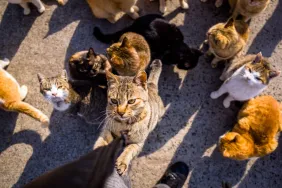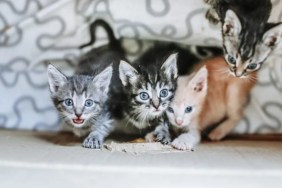On Oct. 13 and 14, the UF College of Veterinary Medicine teamed up with a nonprofit organization in an effort to keep the cat population under control. Through this collaboration, veterinary students had the opportunity to receive practical guidance as they sterilized over 150 cats.
Collaborative efforts to control cat population
Operation Catnip — a nonprofit organization — aims to control the feline population in and around Gainesville, Florida, by spaying, neutering, and vaccinating community cats. Melissa Jenkins — the Operations Director of the organization — expressed great satisfaction with the cooperation between the UF’s College of Veterinary Medicine and the organization dedicated to minority pre-vet students.
According to WUFT News, Jenkins said, “We believe in training these students to be capable, confident and fast surgeons.” She continued, “Our hope is that wherever their careers take them, they can use the skills they’ve learned at Operation Catnip to help community cats and all other animals they find in their care.”
A total of 11 students registered for the course that offered hands-on mentorship at the clinic. The comprehensive learning includes anesthesia of cats, surgical preparation, and administering necessary post-op medications. Moreover, veterinary doctors were present to give them one-on-one guidance on how to carry out spay-neuter operations.
The program involved sterilizing and ear-tipping 166 cats. Ear-tipping is a universal indicator that a cat has undergone spaying or neutering. This entails removing three-eighths of an inch from a cat’s left ear while the animal is under anesthesia. As such, it is a key step in the process of TNR — or trap, neuter, and return.
From UF students to dedicated volunteers
On the weekend of Oct. 14, Ines Aviles-Spadoni and Pristine Thai, with the assistance of Stephanie Parish — a professional cat trapper employed by Operation Catnip — trapped five cats on Gainesville’s northeast side.
19-year-old Pristine Thai — a sophomore double majoring in public relations and political science — has been actively engaged with Operation Catnip since late February, becoming an official volunteer in September. Meanwhile, Aviles-Spadoni — a 55-year-old research program coordinator at UF’s Transportation Institute — routinely cares for nine ear-tipped community cats. After work, she traverses the campus, moving between buildings such as Weil Hall and the Reitz Union, before arriving at Tolbert Hall.
Thai’s friends, who know about her involvement in TNR, inform her about any campus cats they spot. She leverages UF’s Community Snapchat stories to locate many of these cats, saving images of feline sightings for future investigations. In addition, she collaborates with a professional cat trapper through her volunteer work at Operation Catnip — a partnership that grants her access to an ongoing client list of cats needing TNR.
Thai stated, “The professional scopes it out for me in a preliminary visit to determine if it’s appropriate for someone of my experience and resources to take on, and if it is, I take care of it when I’m able to.”
As of Oct. 19, Thai has successfully trapped 23 cats herself.
Challenges in campus cat TNR efforts and dispelling stereotypes
According to Thai, TNR of the campus cats isn’t a straightforward task, mainly because it’s unclear how many actually exist. The UF campus spreads over 2,000 acres, offering plenty of secret locations for the felines to inhabit. Thai further pointed out that cats often shift territories, which complicates tracking them. “There are likely dozens and dozens of cats on campus that I will never know about, unfortunately,” stated Thai.
On the other hand, Aviles-Spadoni believes there is a negative stigma attached to those who care for community cats. “There’s this crazy cat lady trope,” she said. This stereotype wrongly portrays these individuals as middle-aged, childless, unmarried women, which, she insists, is not the case. According to her, those involved in this task are highly educated professionals from different walks of life, such as professors, students, and community members. Their ultimate aim, she added, is to manage the population of community cats and kittens through TNR efforts.
Earlier this year, a social media discussion about cats brought Aviles-Spadoni and Thai together. They planned an in-person meeting at a picnic table located between the aerospace and mechanical engineering buildings, knowing that Willy, a sociable community cat — whom Aviles-Spadoni knew — would also be there to welcome Thai.
Aviles-Spadoni calculated that she’s assisted with the TNR of about 15 cats since 2011, and takes pride in having found homes for four of them. Currently, her contributions to Operation Catnip lean more towards donations, be it in the form of funds or dedicating her time to drive volunteers, such as Thai, to her trapping sites.









